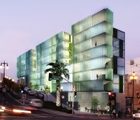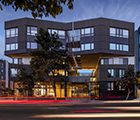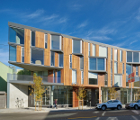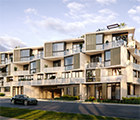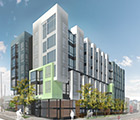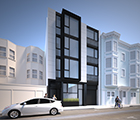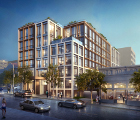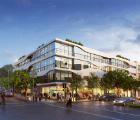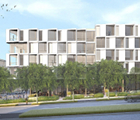In 2020, the luxury condominium, multifamily and co-living markets here in San Francisco, as well as largely across the country, were adversely impacted by the temporary exodus from urban centers as a result of the pandemic. But, as cities reopen, we are starting to see the beginnings of the next upturn.
CONDOMINIUM MARKET
During COVID-19, fewer buyers were shopping for condos, but the buyers who were looking were serious, resulting in higher quality traffic across the board. In addition, a flight to quality resulted in continued strong condominium pricing for the best-located, well-designed product.
Buyers still value location, design and views, but as a result of the pandemic, they’re now particularly interested in smaller, boutique buildings in neighborhood locations versus larger buildings in the downtown core, as well as features such as dedicated home offices, outdoor space (both private balconies and common roof areas with Wi-Fi access), private entrances, individual ventilation systems, and proximity to parks and nature.
In addition, with all the recent tumult in urban areas, security has also been paramount, particularly for those units with ground-floor street access.
At the start of 2021, there was a meaningful increase in new condo sales activity, and similarly, there has been a significant increase in resale inventory and activity from sellers that pulled or delayed listings during the pandemic.
We saw a burst of activity with a number of new offers in the first several months of the year, and traffic has continued to be solid with a good mix of single tech buyers, empty nesters and parents looking to buy for children.
As cities reopen and restaurants, bars, and cultural amenities become available again, we can see and feel a renewed excitement and energy, which will continue as vaccinations increase.
We expect the recovery to pick up steam later this year into 2022 and 2023, and we believe pricing and absorption will follow suit in a meaningful way.
MULTIFAMILY MARKET
In the multifamily space, effective rents declined by 20 percent to 30 percent during the pandemic in urban areas like San Francisco and New York, where a significant portion of those declines were attributable to rent concessions, which started at one month and are now at two and even three months, in some cases.
The good news is that there is still demand from residents moving back into cities to take advantage of rents that were previously unaffordable, and also from those looking to move up into larger and/or newer homes. Like the luxury condo market, we have seen what we think is an inflection point in the multifamily market, with rents in February showing their first signs of growth since the start of the pandemic.
As city amenities and offices open back up, we believe that the younger demographic (Gen Z and younger Millennials) will come back to cities in significant numbers, and we will see strong rent growth resuming in 2022 and continuing in the years ahead.
Initially, this will be driven by a reduction in concessions, and over time the historic imbalance of supply and demand will rear its head once again and cause pricing to ratchet.
In San Francisco, tours for Class A office spaces are up 112 percent, a harbinger of a stronger urban housing market to come. Larger companies in Silicon Valley & the Bay Area are also starting to reopen, including both Uber and Facebook, but in many cases, they have not started to run their commuter buses/shuttles.
This is leading renters to want to live closer to their offices, fueling demand for multifamily in these locations. We believe that younger, single workers will be drawn back to the office first—as they value networking and social interaction—so we expect to see multifamily demand driven by that demographic later this year.
CO-LIVING MARKET
In addition to the promising outlook for the condominium and multifamily markets, we are also excited about the co-living trend we’ve seen as we emerge from the pandemic.
Renters in high-cost housing markets such as San Francisco, New York and Los Angeles have been increasingly squeezed by rents that have consumed over 30 percent of their income. Even after the pandemic rent declines, San Francisco still has the highest rents in the country.
Co-living offers a product that is affordable by design and helps address the “missing middle,” the large gap in housing production for middle class and workforce housing. Co-living provides a much more attainable and affordable price point for young renters, while at the same time offering community and social programming that they strongly desire.
The cost-saving benefits and the community aspects of co-living have enabled this asset class to perform better during the pandemic than traditional multifamily. Any metric you look at, whether it is rent per square-foot, occupancy, or collections, co-living has performed better.
Moving forward, as the workforce becomes more decentralized and agile, the convenience and flexibility of co-living will make it an even more desirable product type for prospective renters.
Co-living benefits such as fully furnished units, rents that are all-inclusive of utilities, technology apps to pay rent and communicate with friends, and flexible lease terms that allow people to easily move between buildings and locations will make co-living even more desirable than before the pandemic.
It is an exciting time to see how traditional condo and multifamily products will evolve and change to meet the demands of a more agile workforce that, in many cases, can now work from anywhere.
Mark MacDonald is the co-founding principal & CEO of DM Development. Combining his passion for architectural design and real estate development, MacDonald co-founded DM Development in 2010 to create exceptionally designed urban infill properties that revitalize communities and promote sustainable development. MacDonald is actively involved in all phases of the development process with an emphasis on acquisitions, underwriting, finance, partnerships, design, entitlements, marketing and sales.
